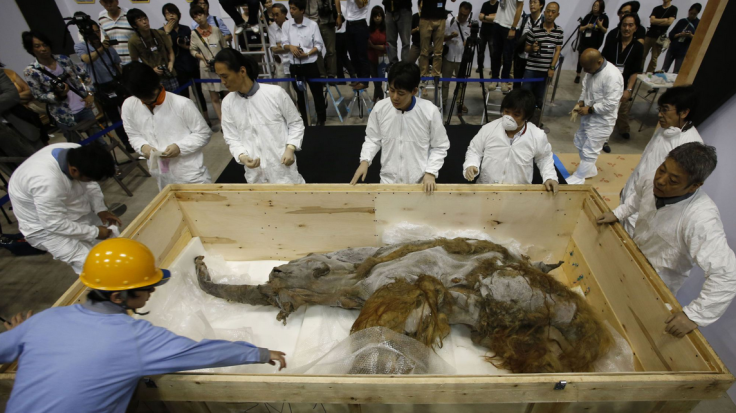Scientists Collect DNA To Clone Woolly Mammoth, Like A Real-Life 'Jurassic Park'

"Jurassic Park" is still fiction, for now. But scientists hope they will soon be able to clone a 40,000-year-old woolly mammoth, using a specimen uncovered last year.
A South Korean company called SOOAM has taken liquid blood samples from the well-preserved specimen, and will test it for a complete strand of DNA. If the right biological data is found, it could be used to clone the long-extinct animal, which was an eight-foot-tall female. The woolly mammoth, called "Buttercup," was discovered last year in Siberia. It's in remarkably good shape for its age, thanks to being preserved in ice after being killed and partially consumed by predators.
If scientists can collect a full strand of DNA from Buttercup's blood, they could map its specific traits onto existing elephant DNA, much like a frog's genome is used as the backbone for dinosaur DNA in the Steven Spielberg film "Jurassic Park," based on a novel by Michael Crichton.
The process would require that a female elephant be implanted with the fertilized egg, to act as a surrogate for the cloned woolly mammoth. This could kill the elephant, according to a report from Quartz, and scientists might have to make several attempts until one successfully gave birth.
"Jurassic World" is due in theaters next June, and the notion of cloning a long-extinct animal will remain science fiction for quite a while, the scientists say.
"'Bringing back the mammoth either through cloning or genetic engineering would be an extremely long process," Dr. Insung Hwang, a geneticist at SOOAM, told the Daily News. "We're trying hard to make this possible within our generation."
© Copyright IBTimes 2024. All rights reserved.





















